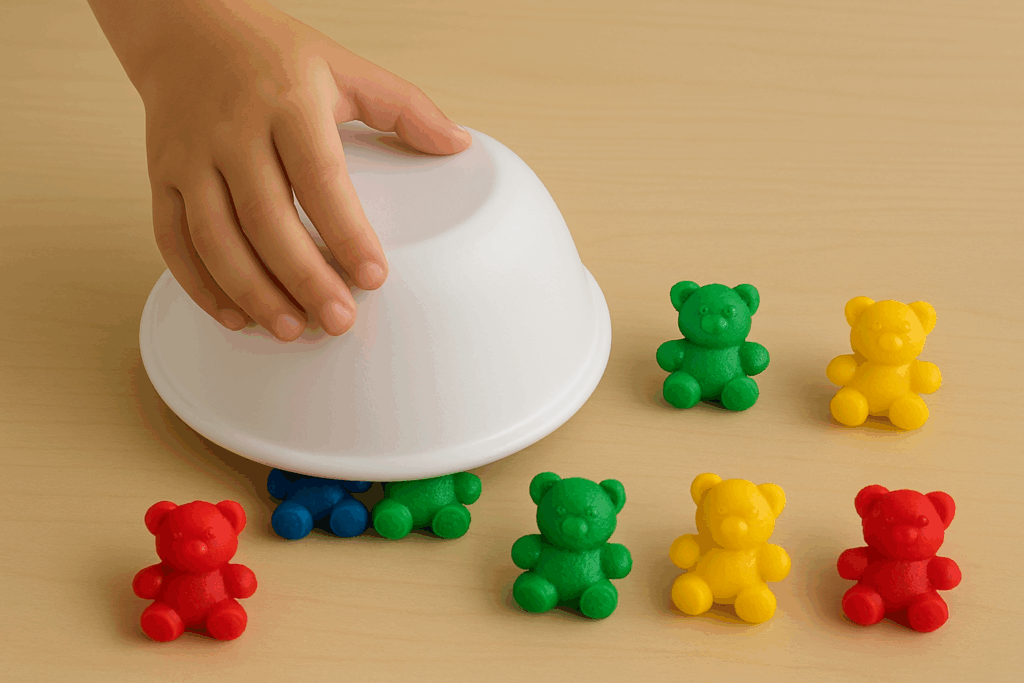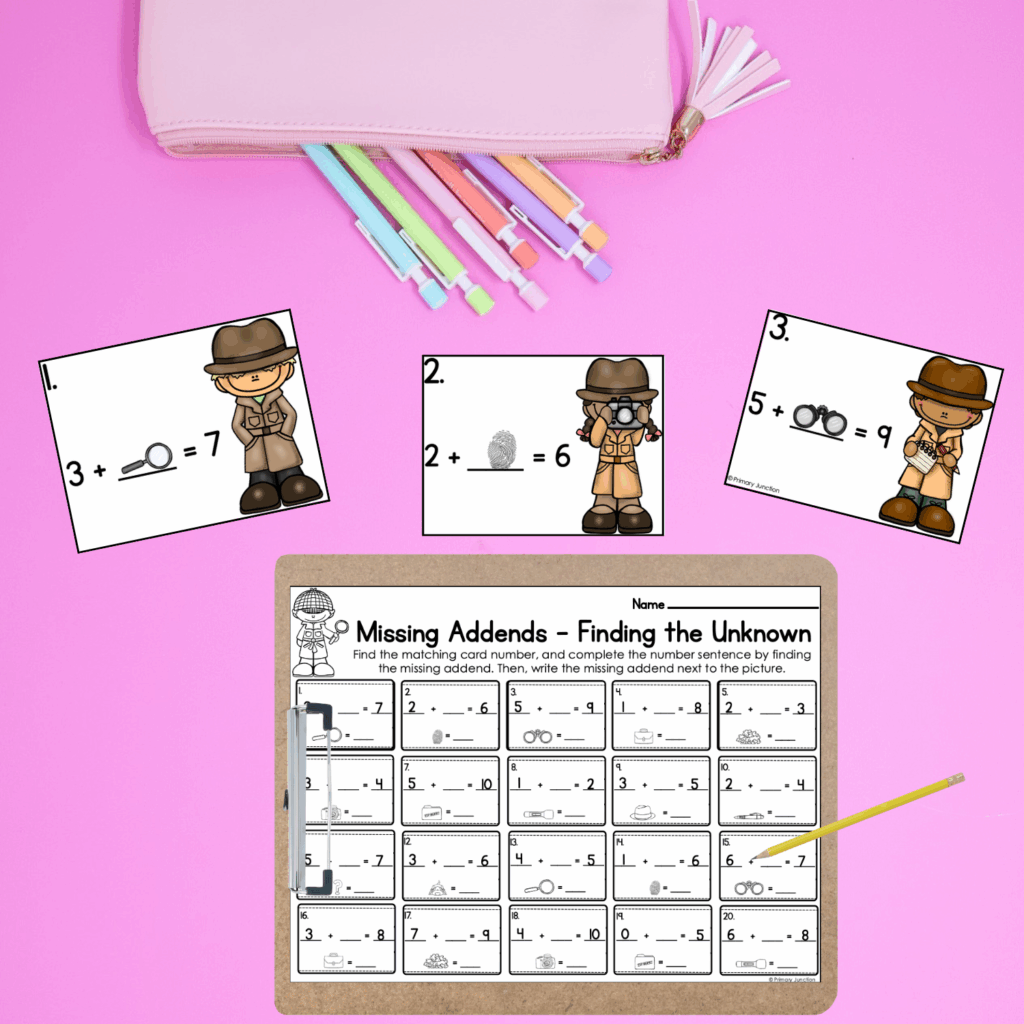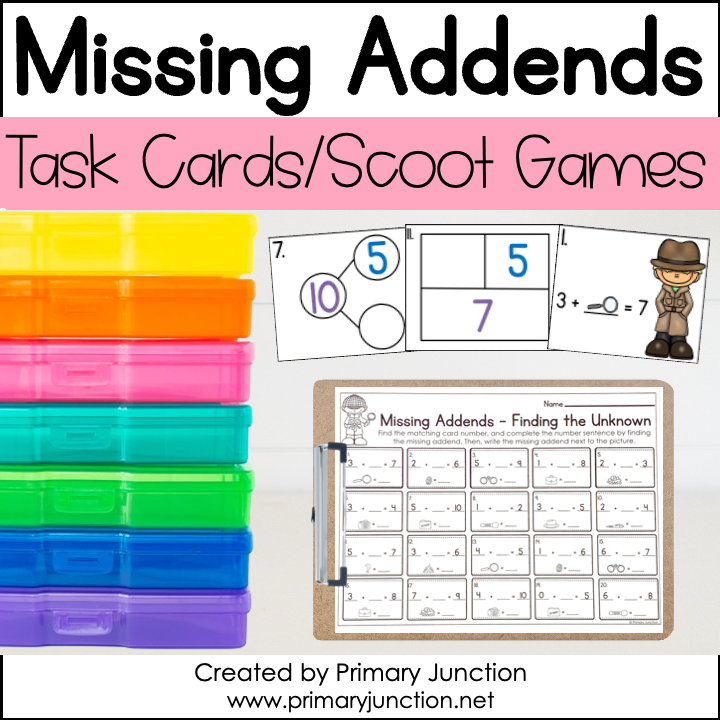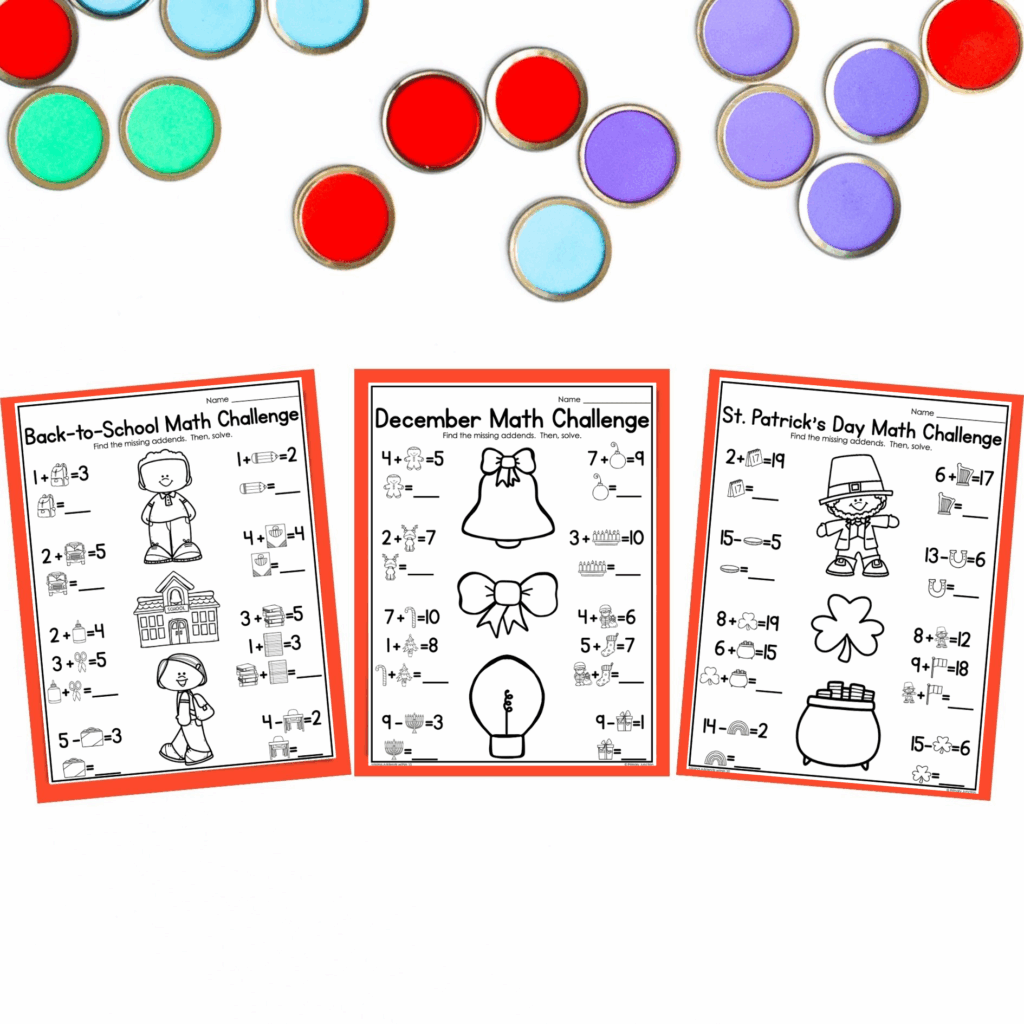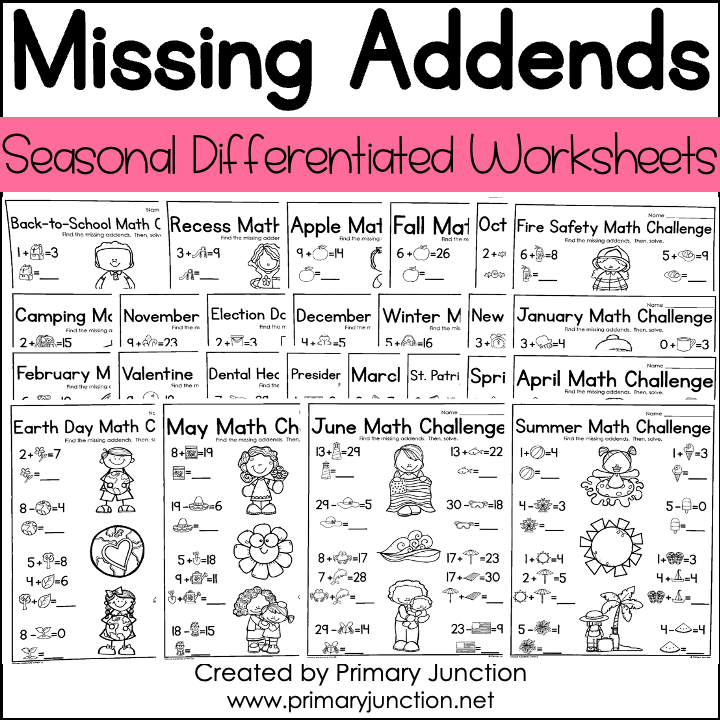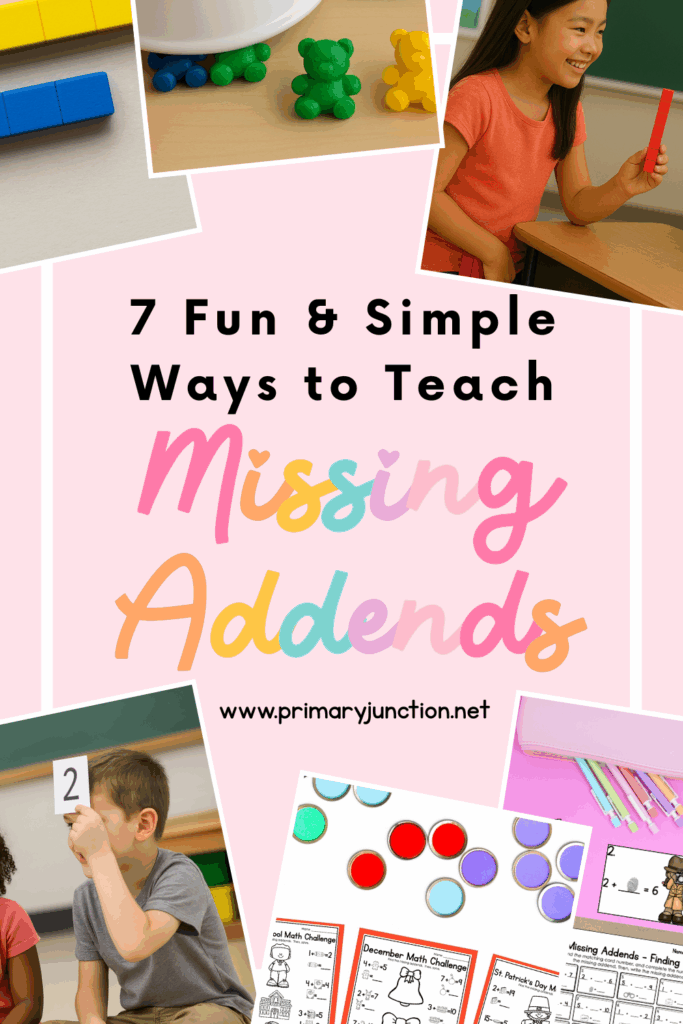7 Fun & Simple Ways to Teach Missing Addends
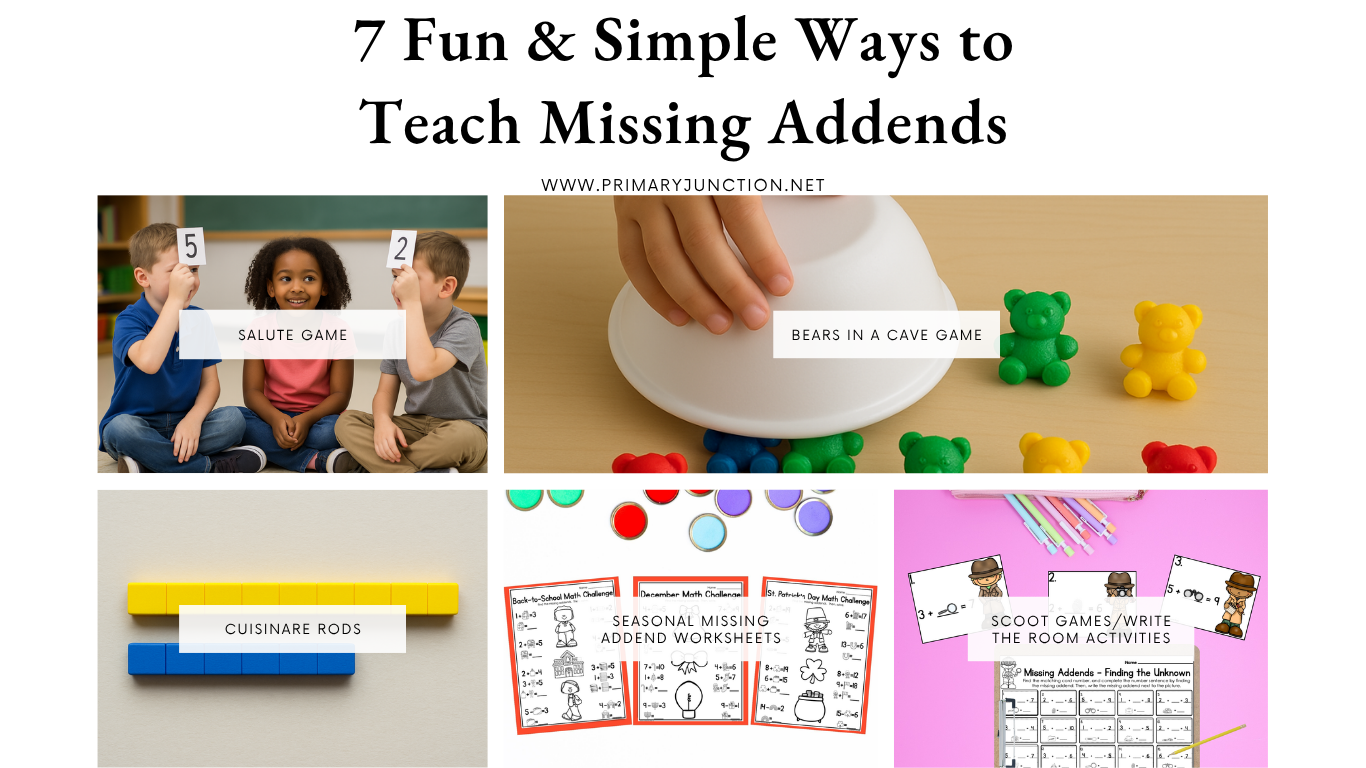
Teaching missing addends can feel a little bit like magic. One day, your students are counting objects from scratch, and then suddenly, they’re figuring out what’s missing like number detectives!
If you’ve ever asked a student, “3 plus what number makes 7?” and been met with crickets or a blank stare… you’re not alone. Missing addends can be tricky at first because students have to mentally hold a number in their head and work forward or backward. But with the right strategies (and a few fun games!), your students will be pros in no time!
Today, I’m sharing my favorite tried-and-true methods for helping young learners master missing addends.
Strategy #1: Teach “Counting On” Like a Number Detective
Before students can solve missing addend problems, they need a strong foundation in counting on. Instead of solving 3 + ___ = 7 by counting all the way from 1, we teach students to start with 3 and count up to 7.
I model it like this:
“Okay, I already have 3. Now let’s count up until I get to 7. Four… five… six… seven. How many numbers did I say? FOUR! So the missing addend is 4!”
We turn it into a little chant:
“Start with what you know—count as you go!”
To add movement and engagement to the lesson, I have my students identify the starting number and the number to count on. We make a first with one hand and set it next to our head and say the number (for this example: 3). Then we hold up fingers with this same hand as we count up to 7. When finished, we can visually see that it took 4 fingers/4 to count up to 7; that means the missing addend is 4!
Another fun way to have students practice counting on to find the missing addend is to use movement! Have students put the given part in their heads. I have them hold their fist and say the number. Then, when we count on to the whole number, we will hop, walk, jump, snap fingers, clap, etc.

Number lines or number paths are also very helpful when first teaching students how to count on to find missing addends. When solving a missing addends problem such as 3 + __ = 7, students can either circle the number 3 on the number path and then count on, or they could use a fun manipulative to place on the number 3 before counting on to 7 to find the missing addend.
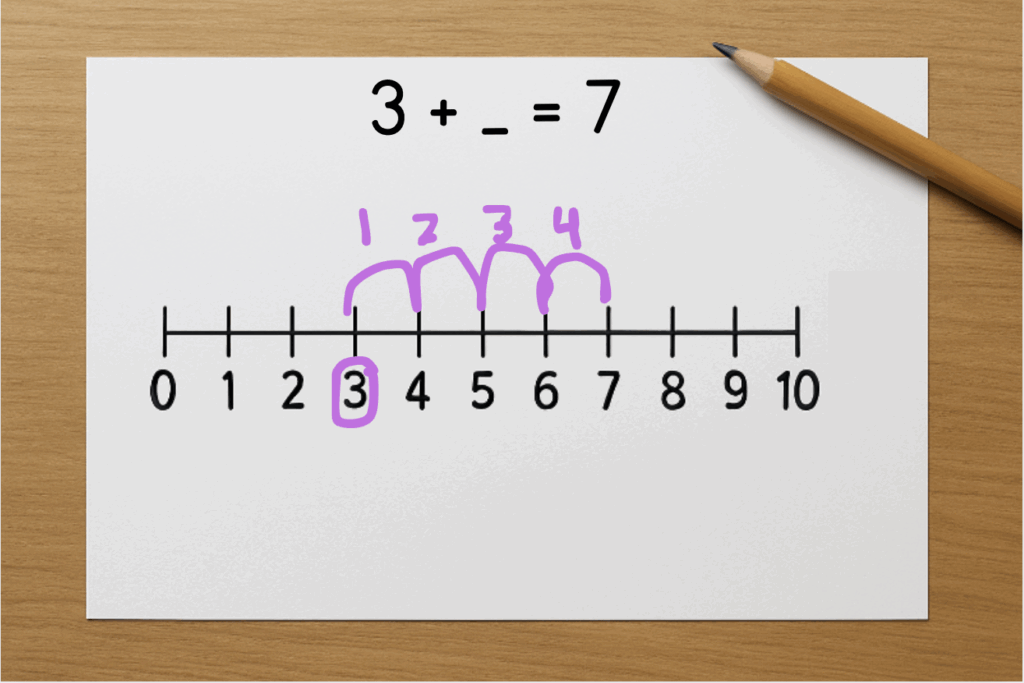
Strategy #2: Bring Out the Cuisenaire Rods
These little color-coded rods are PERFECT for helping students visualize parts and wholes. They make missing addends feel like solving a puzzle rather than doing “math.”
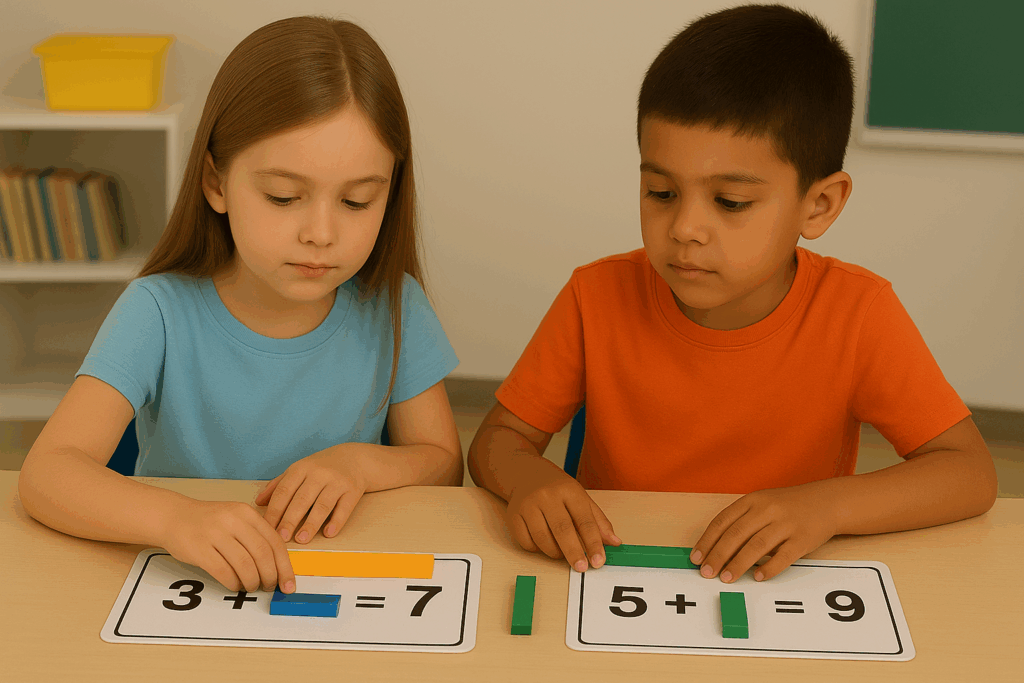
Since we spend a lot of time talking about part-part-whole at the beginning of the school year, the Cuisenaire rods are helpful when connecting part-part-whole to missing addends. When given a missing addends problem such as 3+_=7, I have students find the number 7 Cuisenaire rod and the number 3 Cuisenaire rod. Students place the number 3 (part) directly on top of or below the number 7 Cuisenaire rod. The rods should start at the same starting point and face horizontally. Students can then easily see the missing part/addend. There is a difference of 4, which means 4 is the missing addend!
Below is an example of solving 6 + _ = 9. Starting with the whole, lay out the 9 Cuisenaire rod. Then, find the part, the 6 Cuisenaire rod, and lay it underneath. Students can visually see that the missing part/addend is 3.

Cuisenaire rods are especially helpful to use at the beginning of the week when first introducing missing addends. I like to write a missing addend equation on the board and have students work in partners to solve using the Cuisenaire rods. I also have students write the missing addend equation and answer on their dry-erase boards. When I see that the class is ready, I’ll say, “1, 2, 3! Show me your boards!” and everyone will hold up their work for me to assess.
Cuisenaire rods would also be a great hands-on tool to use in a small group setting with students who need additional practice understanding missing addends.
Strategy #3: Play Bears in a Cave
Bears in a Cave is a wonderful game for students to practice missing addends! This is also sometimes called The Hiding Game. This game is SO simple and SO effective, and students beg to play it again. You could also use this game as a missing addends assessment for students and call students over to complete it one at a time, or you could teach it to the class, have students play with a partner, and later, add it to a math center/early finisher activity.
How to Play:
- Count out 10 (or whichever number you would like to work on) teddy bear counters and show them to your partner.
- Have your partner close their eyes.
- Hide some of the bears under a bowl. That’s the “cave!”
- When your partner opens their eyes, they count how many bears are still outside the cave, and count on to figure out how many are hiding!
“Hmm… I see 6 bears. I know there are 10 altogether…7, 8, 9, 10. Four bears are hiding in the cave!”
If you have students play with a partner, one partner can be the Bear Hider, while the other partner is the Bear Detective.
Strategy #4: Play Break & Hide with Unifix Cubes
Another great partner game I like to introduce to my students when we are learning about missing addends is Break and Hide. I first introduce this game by modeling it to the class and having them identify my missing addend. Once they get the hang of Break and Hide, I let them play it with a partner during our lesson. Eventually, I will add it to a math station or early finisher activity.
- Each student starts with a stick of 10 Unifix cubes (or you could use a different target number, if you prefer).
- One student will put the stick behind their back and break it into two parts.
- They will reveal one part to their partner, and keep the other hidden.
- Their partner has to figure out how many cubes are hiding (aka… the missing addend)!

It’s fast, it’s hands-on, and it builds automaticity without a worksheet. Break and Hide lends itself well to any target number. If you are working on the number partners of 5, students use just a stick of 5, or if you are working on the number partners of 7, students could use a stick of 7, and so on!
Strategy #5: Play Salute — The Missing Addend Game!
Salute is another wonderful game to teach missing addends! It is very similar to Headbanz, so you could also call it Missing Addends Headbanz! Just like Break and Hide, I introduce this game to my class whole group first. To play, students will need to work in groups of three. You will also need to create a bag of 11 index cards for each group. Write one number (0-10) on each card.
Two players will draw one card each and hold the index card to their foreheads while a third student calls out the total. The players must use the visible card and count up to discover their own number (the missing addend). Students will be completely engaged and love this game!

Strategy #6: Use a Missing Addend Scoot Game for Movement and Practice
Once students understand the concept of missing addends, a Scoot Game/Write the Room Math Activity is a great opportunity for students to practice missing addends abstractly, individually, or with a partner.
To play, either place the Scoot Game cards around the classroom walls, on student desks, or around the carpet. Students will move around the room with a clipboard to solve missing addend problems on task cards. It’s perfect for centers, early finishers, or whole-class review.
If you’d like to try a Missing Addends Scoot Game/Write the Room Math Activity with your students, here are several options using part-part-whole maps, number bonds, and equations!
Strategy #7: Reinforce with Seasonal Differentiated Worksheets
Missing addends get WAY more fun when pumpkins, snowmen, or hearts are involved! I love using these seasonally themed, differentiated worksheets for spiral review throughout the school year. These worksheets contain differentiated missing addend practice using Addition to 5, Addition to 10, Addition to 20, and Addition to 30. They can grow with your class throughout the year, or you can use them to meet your students’ needs. These Seasonal Differentiated Missing Addends Worksheets can be used for morning work, whole group practice, small group practice, early finishers, math centers, challenge work, sub plans, and more! If you’d like to use these with your students, you can grab them here.
Missing Addends Should Be Fun — Let’s Make Them a Blast!
Teaching missing addends doesn’t have to feel like pulling teeth. With fun and engaging hands-on tools, games, visuals, and movement, students will truly understand the idea of “What’s missing?” instead of just guessing.
I hope you and your students enjoy learning about missing addends with these activities!
This post contains Amazon affiliate links.

